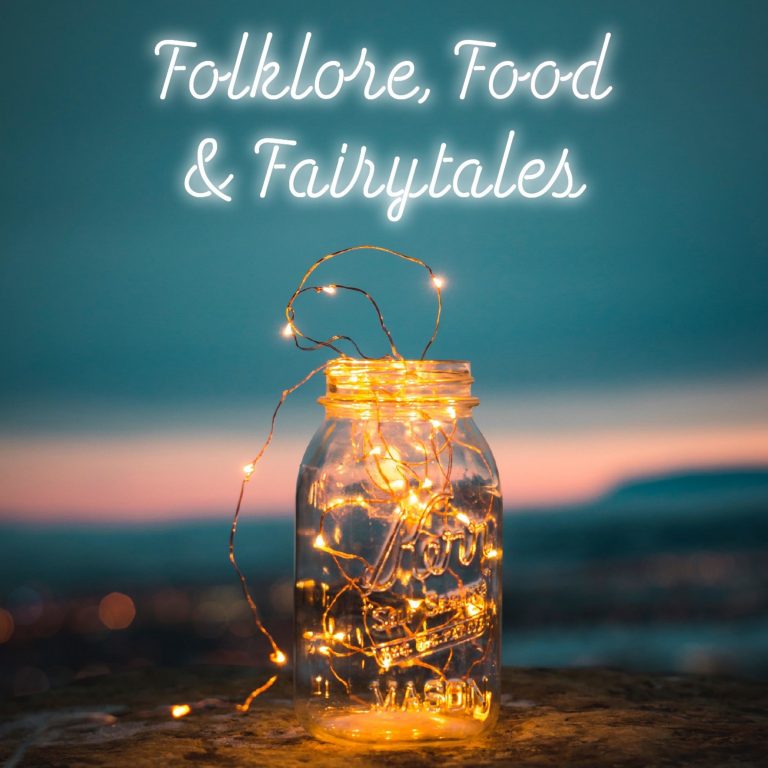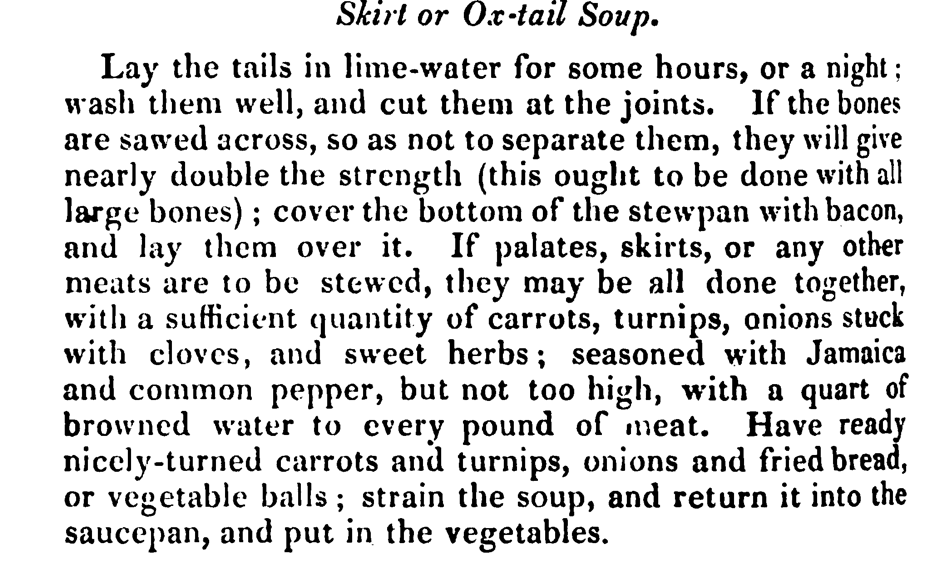I must admit the link to this oxtail recipe from the story is extremely tenuous but I love this story so I’m going dig deep.
The Gifts of the Magician & The Great Historical Oxtail Mystery
In which I explain how the wonderful story of Gifts of the Magician is connected to Oxtail via an extremely tenuous link and actually quite an interesting history.
Story – The Gifts of The Magician adapted from Andrew Lang’s Crimson Fairy Book
Recipe – Braised Oxtail with Orange & Star Aniseadapted from Diana Henry’s Recipe
This story is Finnish in origin from the Finnische Marhchen, it shares similarities with the The Magician’s Horse, Iron John and the Hairy Man. The dispossession of a weak king occurs in various other stories, most notably The Firebird and Princess Vasilisa from Russia, The Grateful Beasts from Hungary and a Breton fairy tale called King Fortunatus’ Golden Wig. A weak king often results in a a strong clever queen and I must admit to twisting this story slightly in this direction.
The Great Historical Oxtail Mystery, associated research material and further reading can be found on my blog Hestia’s Kitchen where I indulge myself in food history.

All those Oxen
Do you remember the bit in the story where the horse told the boy to throw bits from 100 oxen for the raven to eat so they could escape? Well imagine if the tails of all those oxen were lying around you would need some good oxtail recipes to use them all up, so here we are. I did mention that it was tenuous.
So lets start with Oxtail, a History.
It turns out its a bloody long history but strangely hard to pin down, at least in England. Oxtail appears in a lot of cultures and without starting a PhD in the subject it’s difficult to tell whether all the cultures simultaneously just looked at the ox one day and thought ‘why are we wasting that bit on the tail when we cook absolutely everything else?’ or whether one or two cultures influenced the others. So back to England; the Oxford English Dictionary (OED) has its first usage as Old English (basically anything pre 1150) in the Laws of Ine dated 688-695.
The next mention is in 1482 and again in 1500, so that’s a lot of years in between where oxtail recipes remain undocumented. My knowledge of Old and Middle English is practically zero (except some of the ruder bits of Chaucer) so I moved on to some books I could actually read. That’s where I found a problem, lots of ox mentions, in medicine, animal husbandry (I will never forget the instructions for ox castration) and in cooking but not the tail. Ox head (1631) ox cheeks (1756), ox gall (1631), ox bladder (1669), ox marrow (1669), ox tongue (1631) and the general wonderfulness of ox meat in general but no tail until 1827. There was a cheeky ox rump in 1810 which is probably the same as oxtail in context but I may be reaching.
Possible Huguenots
There seems to be no reason for this until you find lots of mentions of the Huguenot refugees moving to London in the late 1700s and then using ingredients discarded by British butchers and their french cookery knowledge to make the now famous oxtail soup. I find it really difficult to believe that those people living in poverty didn’t touch the oxtail until shown how to by the incoming French. I’m very happy to concede that they made it actually taste good but if you are cooking ox heads and tongues in 1631 and almost certainly earlier why would you ignore the tail? To quote the wonderful Terry Pratchett:
“cooking … has been evolved by people who had to make desperate use of ingredients their masters didn’t want. No-one would even try a bird’s nest unless they had to. Only hunger would make a man taste his first alligator. No-one would eat a shark’s fin if they were allowed to eat the rest of the shark.”
Witches Abroad, Terry Pratchett
However, I couldn’t find any written evidence anywhere, and I really tried. If anyone has a citation I would love to hear it. That’s not to say they weren’t cooking it just that they didn’t write it down. As my Dad says, they probably just called it fly swatter soup and got on with it, longing for a day when they would get to eat a better bit of the cow.
Eventually Oxtail Soup
So 1827 was the first mention I could find in ‘Domestic Economy and Cookery for Rich and Poor’ by ‘A Lady’ and from then on its everywhere.

Celebrity Chefs getting in on the act
Even early celebrity chef Alexis Soyer got in on the act later in the century in ‘A shilling cookery for the people’

So that’s it, a long slide from there to a tin of oxtail soup in the supermarket. Although you could buy 6 tins from Waitrose for £3. That’s the rough equivalent of what a shilling is worth now in purchasing power compared to 1854 when this book was published. You would, however, struggle to buy any actual oxtail with which to make soup. At the time of writing it is selling for about £10 per kg (around 2lb) online although my local butcher has it for £6.58 per kg.
In which I come back to my tenuous link and don’t actually make soup
At those prices I really need my oxtail to be something special (although the king now has all those spare oxen parts so he could afford to experiment). This recipe is something special with delicious warming Asian flavours, it is available here in its original by the truly wonderful Diana Henry. Diana’s food writing is wonderful, it takes you to wonderful worlds and conjures up feasts without even leaving your sofa. If you can make it from the sofa to the kitchen to actually make her recipes you will be in for a treat.
Braised Oxtail with Star Anise & Orange
4
servings30
minutes3
hours30
minutesAn Asian inspired Oxtail recipe, with strong flavours. The bones create rich stock and the meat breaks down into sticky, savoury deliciousness with hints of aniseed sweetness and a touch of mouth-numbing pepper in the sauce. If you can’t wait to rest it overnight, it is still wonderful but it will be even better if you can resist the temptation. All credit goes to Diana Henry.
Ingredients
1.5kg oxtail
25g seasoned flour
1½ tbsp groundnut oil
2 onions, sliced
3 cloves garlic, very finely chopped
2.5cm ginger root, peeled and grated
1 tsp five-spice powder
½ tsp ground Sichuan pepper
2 dried chillis (or ½ tsp dried chilli flakes)
A piece of Chinese dried orange peel (or several broad strips of fresh orange zest)
150ml orange juice
5 tbsp dark soy sauce
3 star anise
1 cinnamon stick
3 tbsp soft dark-brown sugar
100ml Chinese rice wine or medium sherry
750ml chicken or beef stock
4 spring onions, trimmed and chopped on the diagonal
2 tsp sesame seeds (optional)
Directions
- Dust the oxtail all over with the flour then shake off the excess. Heat the oil in a large casserole dish and brown the oxtail all over, including the sides, in batches. Set aside.
- Add the onion to the pan and cook until pale gold and softening, then add the garlic and ginger and cook for 2 more minutes.
- Stir in the five-spice, Sichuan pepper and chilli and cook for another minute, then add all the other ingredients except for the spring onions and sesame seeds. Put the oxtail back in the pan, bring the mixture to just under the boil, then immediately turn the heat down very low. Cover and cook for 3-3½ hours, or until the meat is absolutely soft and beginning to fall off the bone.
- Remove the fat from the surface now (there will be a lot of it) or leave to cool, refrigerate overnight, and remove the fat the next day (the oxtail will improve).
- Lift out the oxtail with a slotted spoon and set aside. Bring the cooking juices to the boil and reduce them until they are syrupy: but keep tasting – you don’t want them to become too salty or too sweet.
- While the juices are reducing, strip the meat off the oxtail bones, this is very messy work!
- Put the oxtail back in the pan and heat through. Serve from the pan, or transfer everything to a heated bowl, scattering the spring onions and sesame seeds (if using) on top. If you have ended up with a lot of juice, you don’t have to serve it all.
Notes
- This wonderful recipe is from Diana Henry, the only change I have made is the amount of oxtail just due to the ridiculous cost of it currently and that fact that I take it off the bone before reheating.
Further Reading
Apologies, these are all scanned in historic books so the pages numbers are nonsense and I haven’t bothered to list them. They are all open access or are out of copyright.
A history of the French in London: Liberty, equality, opportunity
University of London Editors: Debra Kelly, Martyn Cornick
The English Housewife, containing the inward and outward virtues that ought to be in a compleat woman, by G Mareham, 1631 (Library of Congress)
Domestic Economy & Cookery for Rich & Poor by A Lady 1827 (Google Books)
A New System of Domestic Cookery formed upon principles of economy by A Lady (Mrs Rundell), 1810 – Google Books
The Compleat Cook, Market Woman and Dairy Maid, Jassintour Rozea, 1756 – Archive.org
The Closet of Sir Kenelm Digby Knight Opened, Kenelm Digby, 1669
I haven’t added the book here with the castration because I have blocked it out and can’t remember which book it was in (one of the early ones). There were a lot of interesting historic books that I read to find out there was no mention of oxen beyond their role as work beasts. I went down a historic black hole of oxen, if you will and it was never-ending. I had to be tempted out with pizza and wine and I think it’s best if I leave it alone for a while. Although if the apocalypse comes and we need someone for this I will be prepared to share the secret.
Podcast
If you want to listen to the story that began this oxen obsession please go to my podcast at the top of the post.
Featured image is from Photo by Sebastian Unrau on Unsplash
Oxtail image is author’s own.
In case you should be interested this is a little bit more about me


